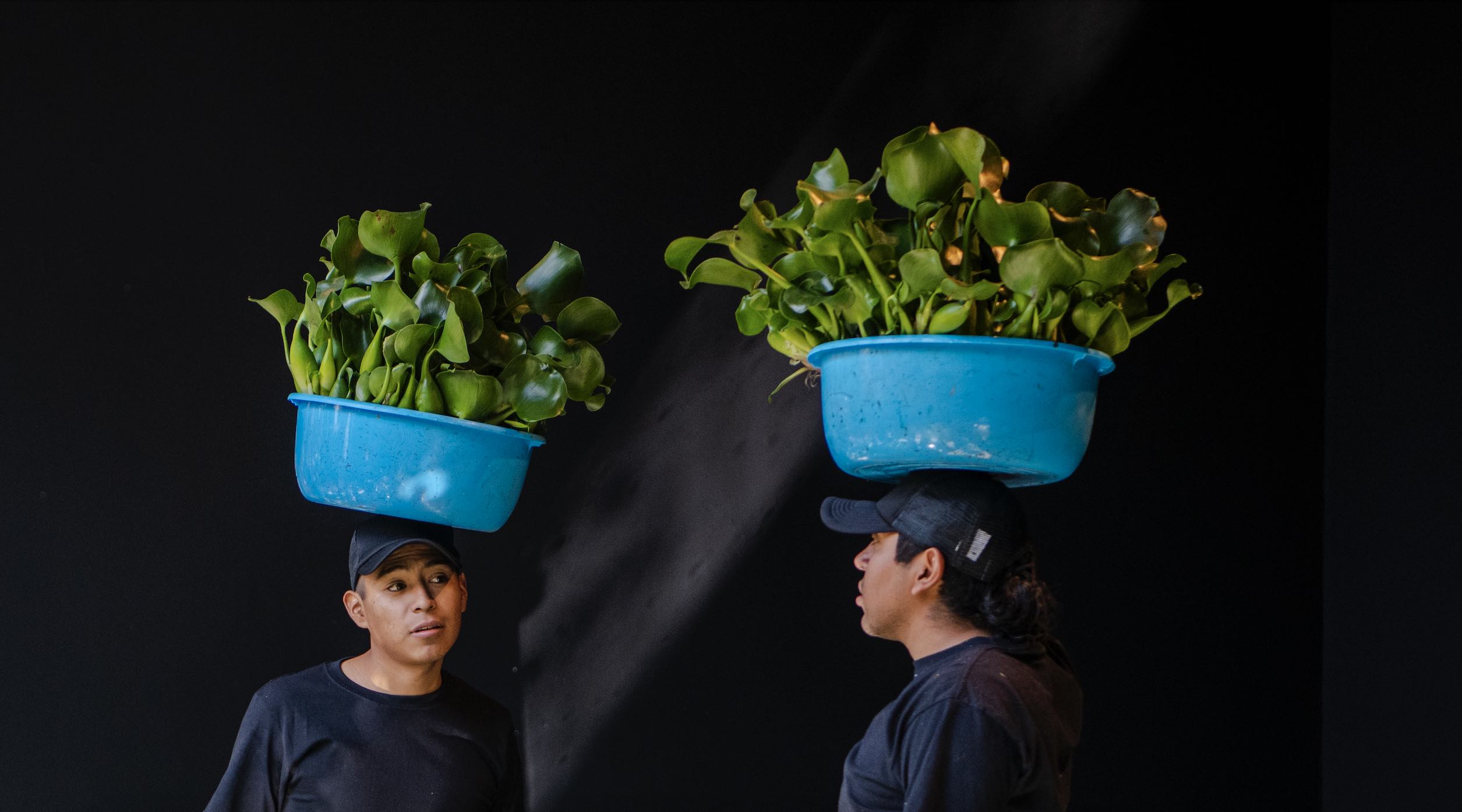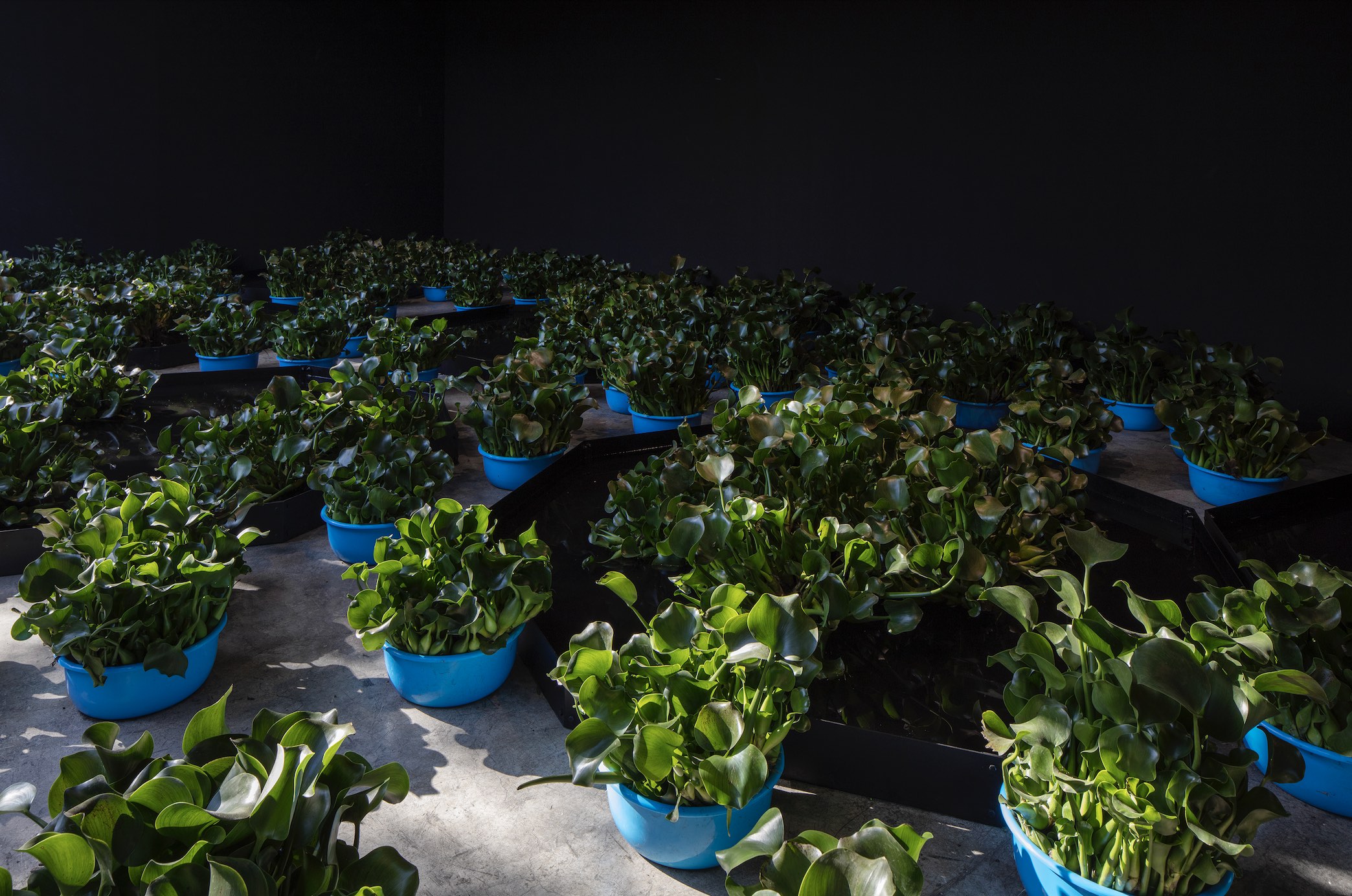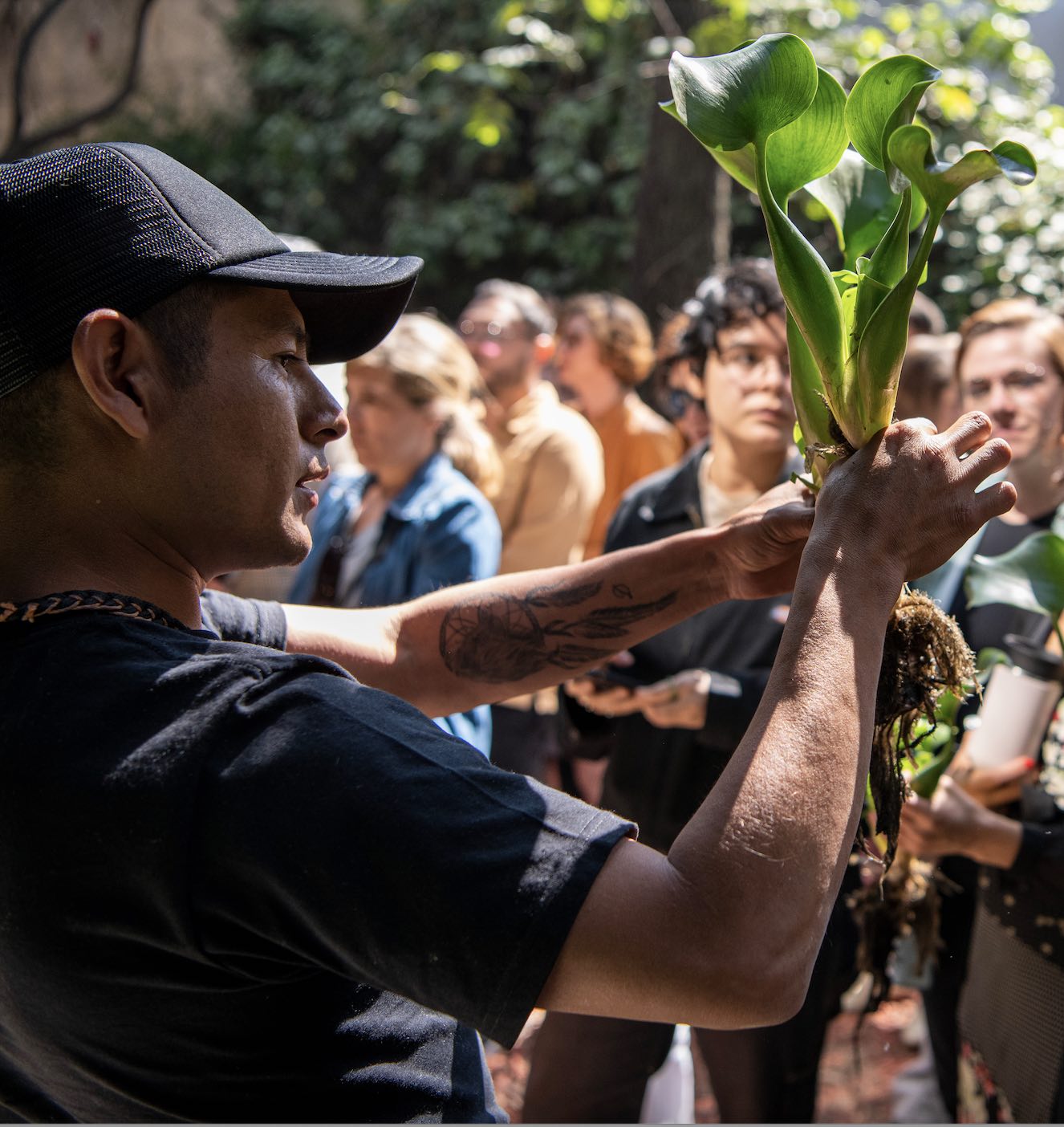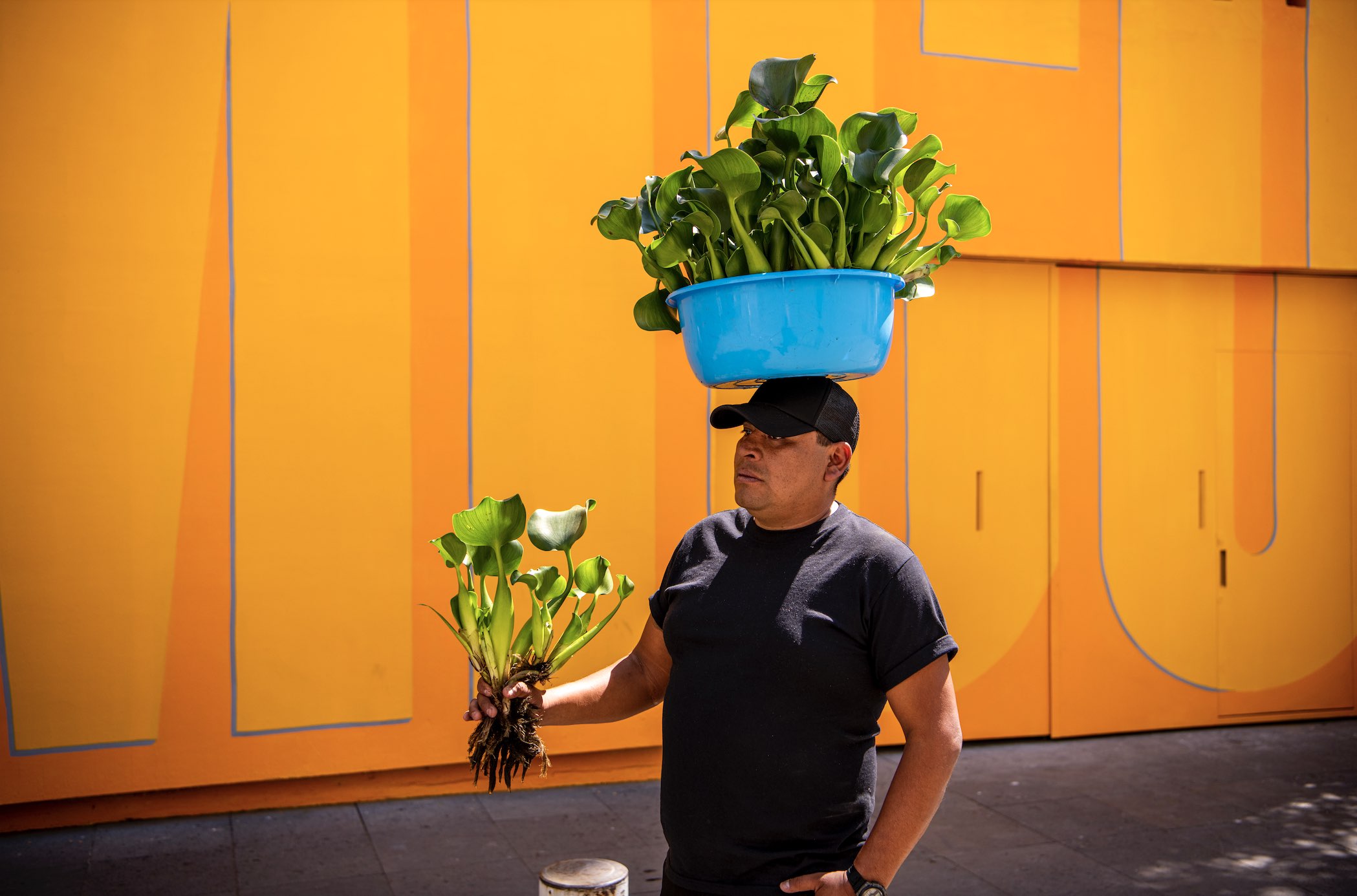
Review
A Gathering of Lilies in a Concrete Garden: Héctor Zamora
by Carolina Magis Weinberg
At Labor
Reading time
4 min
The gallery space turns to the outside; without walls or windows, the concrete floor is only separated from the ground by a short step. Inside and outside there are two gardens. Outdoors there are trees: leaves on the ground accumulated from fall and winter. Inside, a lake has been transported using blue buckets and seven large black metallic octagons. Water lilies blooming everywhere. Among the metallic black tones you can see sparkles of water and the two gardens reflected in it. The entire space is dotted with saturated blue and green tones.
The concrete-floored garden waits quietly while the earthen garden fills with expectant people watching the immobile lilies. At the stroke of noon there enters a man dressed completely in black: shoes, pants, belt, shirt, and cap. He stands in the center and quite naturally bends down, picks up one of the blue containers and places it on top of his head. The balance is so intense that it becomes just another material in the space. The environment, until now immobile, gravitates. The man stands up, looking straight ahead while lilies sprout from his head.

A moment later, one by one, other men dressed in black arrive. Each one repeats the initial rhythm and stands balancing a horizontal blue bucket full of vertical lilies on their heads. They all emerge together like a balanced garden; they move a little in order to be able to hold the container with their heads—and without the help of their hands. The upper part of their bodies, the shoulders and the neck, are synchronized with the weight they support, a minimal negotiating dance between body and object.
Then they all begin to walk outside and to approach the people who are watching attentively. The men lower the containers and with their hands begin to offer lilies. They touch them, show them, explore them with their fingers, while they explain how to care for these plants. Slowly, the silence that prevailed begins to break and is filled with botanical dialogue. Everywhere you look, one by one, people in the audience begin to hold water lilies in their hands: the garden is transferred.

“They should be put in a container with water,” many of them explain to different groups of people. “If they take good care of them, when it’s rainy season, they can grow little purple flowers.” They say this while balancing blue buckets and with their hands turning green, wrapped in lily.
This overlapping of mobile gardens is Delirio, a performance by artist Héctor Zamora, at the gallery Labor. The gallery text says that the work opens up a dialogue regarding economic models, and specifically informal transactions. One of the lily-vendors says that he was doing his work when the artist saw him walking in this balancing act characterizing his occupation; it was then that they began a dialogue that has borne many fruits (or purple flowers). Among the boats and chinampas in Xochimilco and San Gregorio Atlapulco, they fish for water lilies that they later sell throughout the city. They take them out of the canals, clean them, and then select them with care in order to fit them in their water-filled buckets. They repeat this activity every day. Balancing the lilies on their heads, they go out in order to roam the streets.

The lily, a plant that was once ornamental and is now a pest, is the subject matter that concerns Zamora. In this balancing-game, the lily-vendors fulfill a fundamental role by cleaning the canals of this plant that smothers them. The workers turn the lily into a product of ornamentation, simultaneously and masterfully achieving two balances in two parallel system: ecological and mercantile.
Zamora thus points to the value exchanges that work brings. In the gallery space, the lily invasion, via mediation by the lily-vendors, becomes a material transfer of value. From the invasion in the canals to the exhibition space, the lily undergoes a process of exchange in which it becomes increasingly unique: it ends up being delivered hand-to-hand as its story is told. From the many lilies, to the singular lily that rests peacefully in an aquatic vase, the accumulated work by the men of this balancing act takes this delirious plant from plague to ornament.
Published on February 18 2023